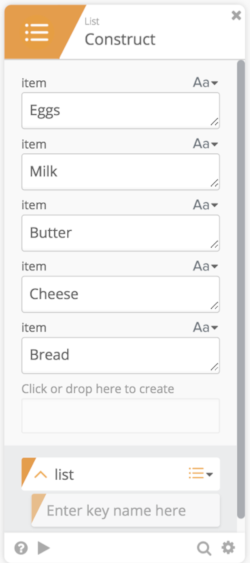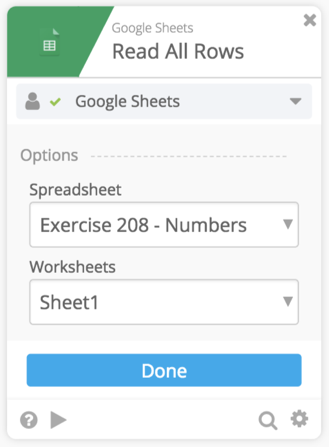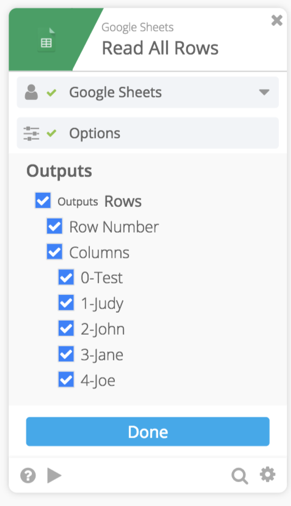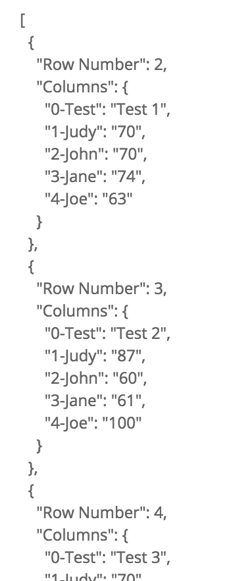This workbook is designed to accompany section 208 - Introduction to Lists.
Pre-Requisites
For this workbook, you should have your own environment with login credentials.
If you are using a Production environment, please take care with any existing processes.
You may also elect to use 30-day free Trial Org by visiting: https://azuqua.com/sign-up
Because this is an Integration product, we will encourage you to use freely-available applications within this material. Tools such as Twitter, Slack, and others are great products and typically allow you to sign-up for free!
Exercise 208-1 - Create an List
Let’s dive into the product and begin to work an example of a list within Designer!
Take list you see in the following picture as a reference and let’s create a new Flow with the information (you don’t have to add all of the items):

- Create a new Flow
- Within the Flow, select an List >> Construct card
- This will allow us to manually create our list by adding in each item one-by-one
- Select some of the items from the grocery list to add to the construct card
The result should look something like this:

The output of this is your List! Note that the icon (dots and lines) represents a List type.
Exercise 208-2 - Numbers
Let’s add another List - Compose and create a new list of numbers. The card should look like this:

With this example it’s important to check your List Output. Clicking the logo next to the List output gives you a drop-down that allows you to select the List Type. Here - make sure you select “123” for Number.
Again - last step is a common stumbling block when you’re new at using lists. Type is important!
Exercise 208-3 - Lists of Objects
Download the following Google Sheet: 208-numbers.csv
This fill will contain a list of scores (grades) from a set of tests.
- Create a new Google Sheet - import the CSV and name it “Exercise 208 - Numbers”
- Create a new Flow
- Select the Read All Rows action using this spreadsheet and the correct worksheet

- Make sure you select the appropriate outputs (as in the below image)

- Review the “Read All Rows” card … it should look like this:

- Click the “Test this Flow” button at the bottom of the card and review the result.
The output of this will be a List - but of Objects! Again, this output is in a format called JSON which we won’t cover within this module. If you want to learn more about JSON, please review the module - “API and JSON - Fundamentals”

Exercise 208-4 - Drag and Drop
Andrew: May need to explain how a list input looks and works… and the idea that you can type into it (one items at a time) or drag a list into the entire input. Pictures would help.
Again when you have a list cards a list will be denoted by a bulleted list icon that looks like this:
Just as with other fields, you can drag and drop list fields into cards which accept them.
Let’s open the Flow we created in Exercise 208-3
- Let’s add a List >> Filter card
- Drag in the List (Rows)
- Set your operator to “equal to”
- Set your Path
- We want to find a specific test (like Test 1 or Test 2) so …
- Columns.0-Test
- Comparison: Test 1, Test 2, etc
